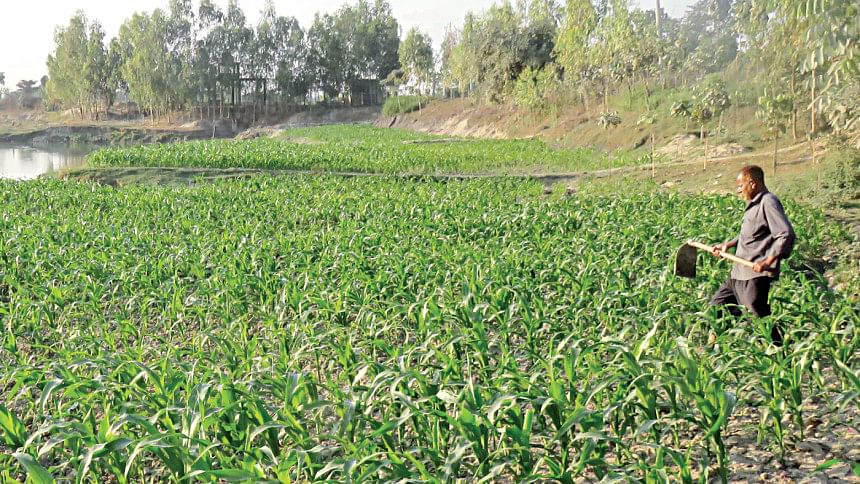Maize production to rise as high prices drive planting

Bangladesh is expected to produce more maize this year as farmers, encouraged by profitable prices, have planted the coarse grains on an increased area of land.
The Food and Agriculture Organization (FAO) earlier this month forecasted that the country would bag 48 lakh tonnes of the coarse grains in 2022, up 2 per cent from a year ago.
The amount is 30 per cent higher from the five-year average of 37 lakh tonnes, the UN agency said, adding that remunerative prices of maize and continued strong domestic demand for the grains drove expansion in the area planted.
It also raised projections for increased production of the coarse grain in China, India, Indonesia, Thailand and the Philippines.
"Farmers are satisfied with the prices from the last harvest of maize. So, we expect production to go up," said Md Mizanul Hoque, senior vice President of the Maize Association of Bangladesh (MAB).
Prices of maize, the main ingredient for poultry, fish and livestock feed, rose 25 per cent year-on-year to a record Tk 30 per kilogramme during the harvesting period this year, he added.
In October 2022, the wholesale and retail prices of maize reached Tk 32.9 and Tk 34.5 per kilogramme respectively, their highest levels since 2016, said the US Department of Agriculture in its October issue of Grain and Feed update on Bangladesh.
The wholesale and retail prices of corn in October 2022 were approximately 21 per cent and 33 per cent higher respectively compared to the same period last year, it added.
Buoyancy in prices is expected to continue in the coming harvest too as supply concerns from the international market will remain because of the Russia-Ukraine war, Mizan said.
Bangladesh requires around 70-75 lakh tonnes of maize for feed making, partial human consumption and starch making. Poultry farms are the largest feed consumers in Bangladesh, and corn accounts for 50 to 60 per cent of the raw materials of poultry feed, said the US Department of Agriculture in a report.
Millers import 20-25 lakh tonnes of maize mainly from India, Brazil and Argentina to meet the domestic requirement, of which around 60 per cent is locally produced, according to industry operators.
The country has to spend around $660 million annually to import the grain, said Mizan in a paper presented at an event earlier this month.
Maize, once an alien to Bangladesh, is now the country's second biggest cereal crop after rice.
"Farmers consider corn a cash crop due to its good yield potential and high market price," said the USDA.
Winter is the main season to grow the crop planted in November-December while a small portion is grown in summer.
For this current winter, the Department of Agricultural Extension (DAE) targets to ensure cultivation of the grain on 4.63 lakh hectares from 4.62 lakh hectares the previous fiscal year.
Badal Chandra Biswas, additional director of monitoring and implementation at DAE's Field Service Wing, said farmers already planted maize on 3 lakh hectares until now.
"The maize fields look wonderful so far. Many farmers have switched to maize from other crops. The grain has also been cultivated on fallow lands of various organisations ," he said.
Mizan said growers will plant the cereal until the end of December.
"We see robust growth in cultivation in the char lands in the north and central districts," he said, adding that planting will increase by up to 30 per cent in the char areas this year.
Maize area will increase in the main land too, he added.
"Farmers are planting the maize timely this year and weather looks favourable so far," he said.

 For all latest news, follow The Daily Star's Google News channel.
For all latest news, follow The Daily Star's Google News channel. 




Comments